The stone remnants of Fermanagh's industrial past
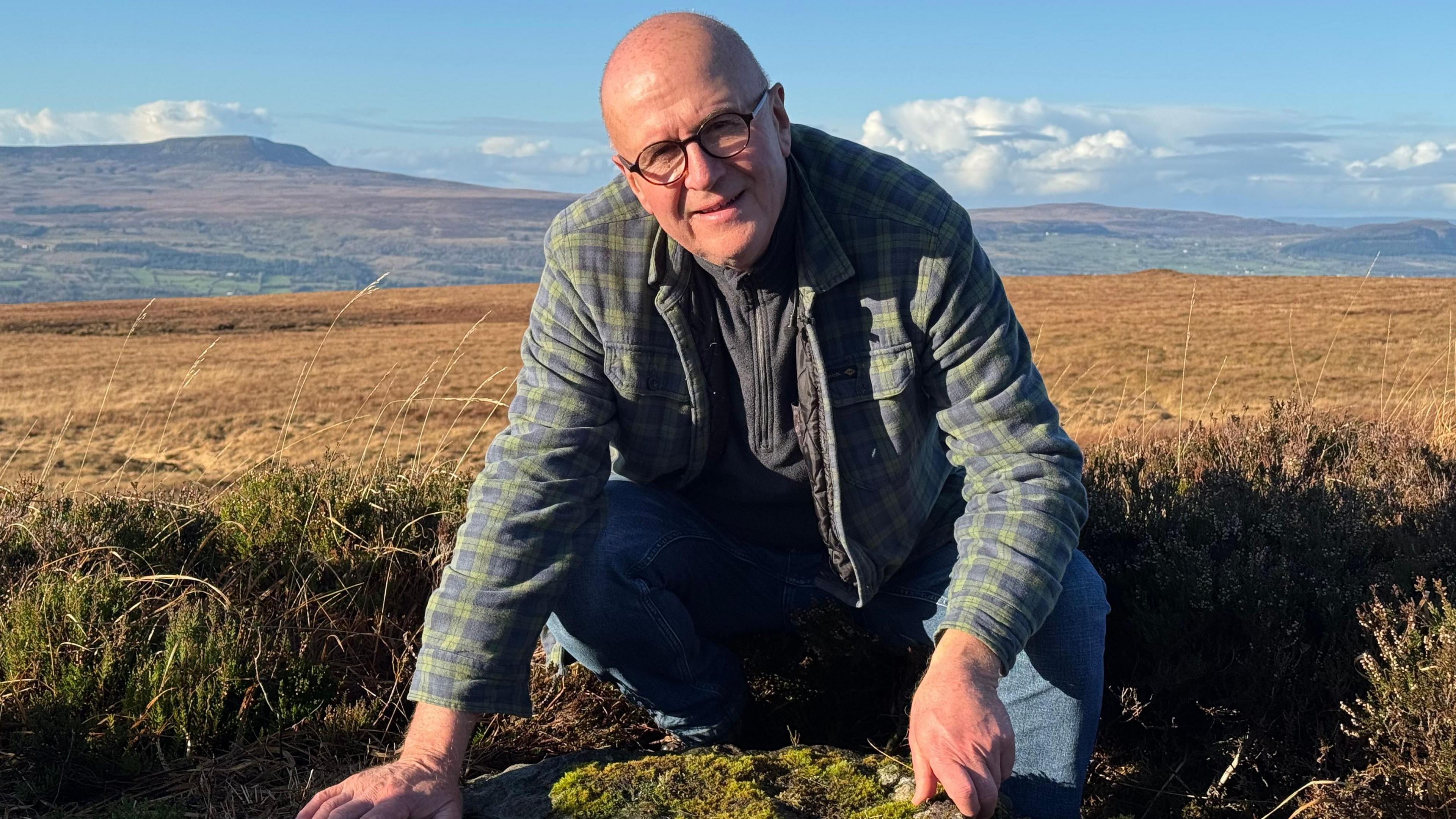
Barney Devine says the project has brought history to life
- Published
In the fields and hills along the Fermanagh border lie the remains of a once thriving industry.
Large round stones lie on the ground, some half-buried in bogs and streams.
They are the abandoned workings of millstones, the history of which has long been forgotten.
They were rediscovered as part of a community project to restore a water wheel at an old corn mill near Florence Court.
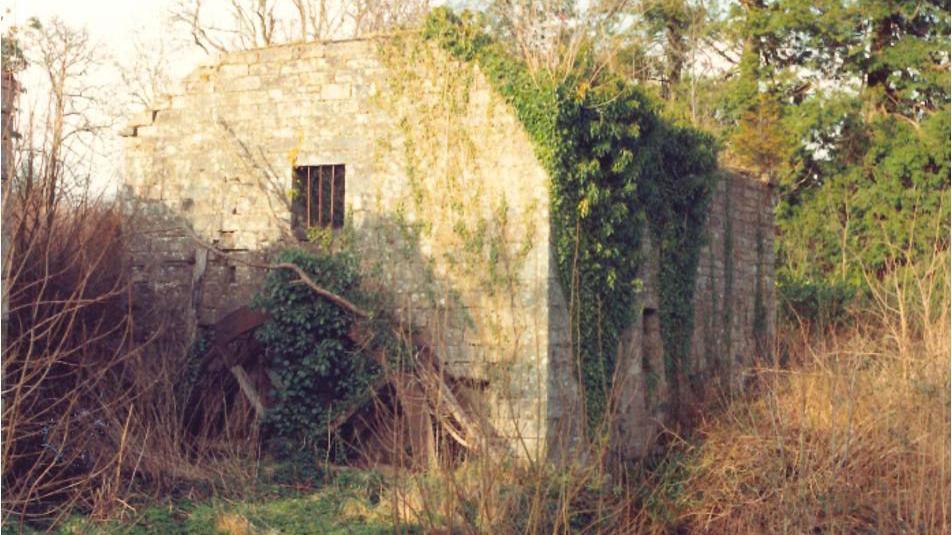
Most old mills now lie derelict, a symbol of a bygone era
One of those involved in the project was Barney Devine who set out to discover where the millstones used to grind the corn would have come from.
His quest took him to the top of Slieve Rushin mountain, 1,200ft (365m) above Derrylin and Ballyconnell on the border of Fermanagh and Cavan.
In the shadow of modern wind turbines Mr Devine discovered evidence of the area's industrial past.
Over the past year he has found eight or nine locations around the mountain where quarrying took place from the 1750s to the 1840s.
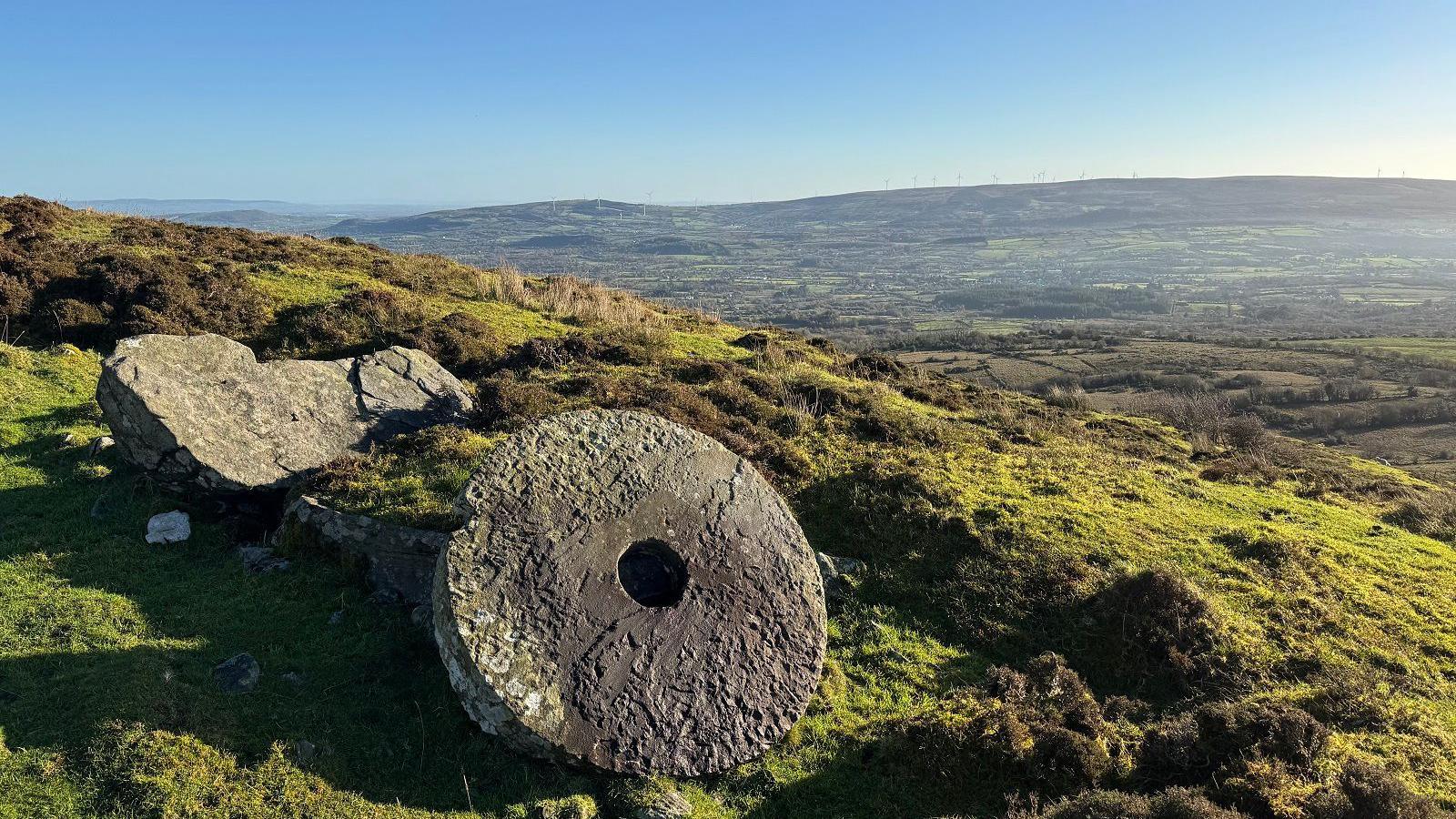
Some millstones lie abandoned on hillsides, like this one near Kinawley
Local farmers shaped the stones to the required size before transporting them off the mountain on horse-drawn sleds to mills in neighbouring counties.
The area was once an industrial hub which included the manufacture of cotton, linen, candle wicks, candles bricks, roof and floor tiles.
The millstones Mr Devine found on the mountain were broken and abandoned.
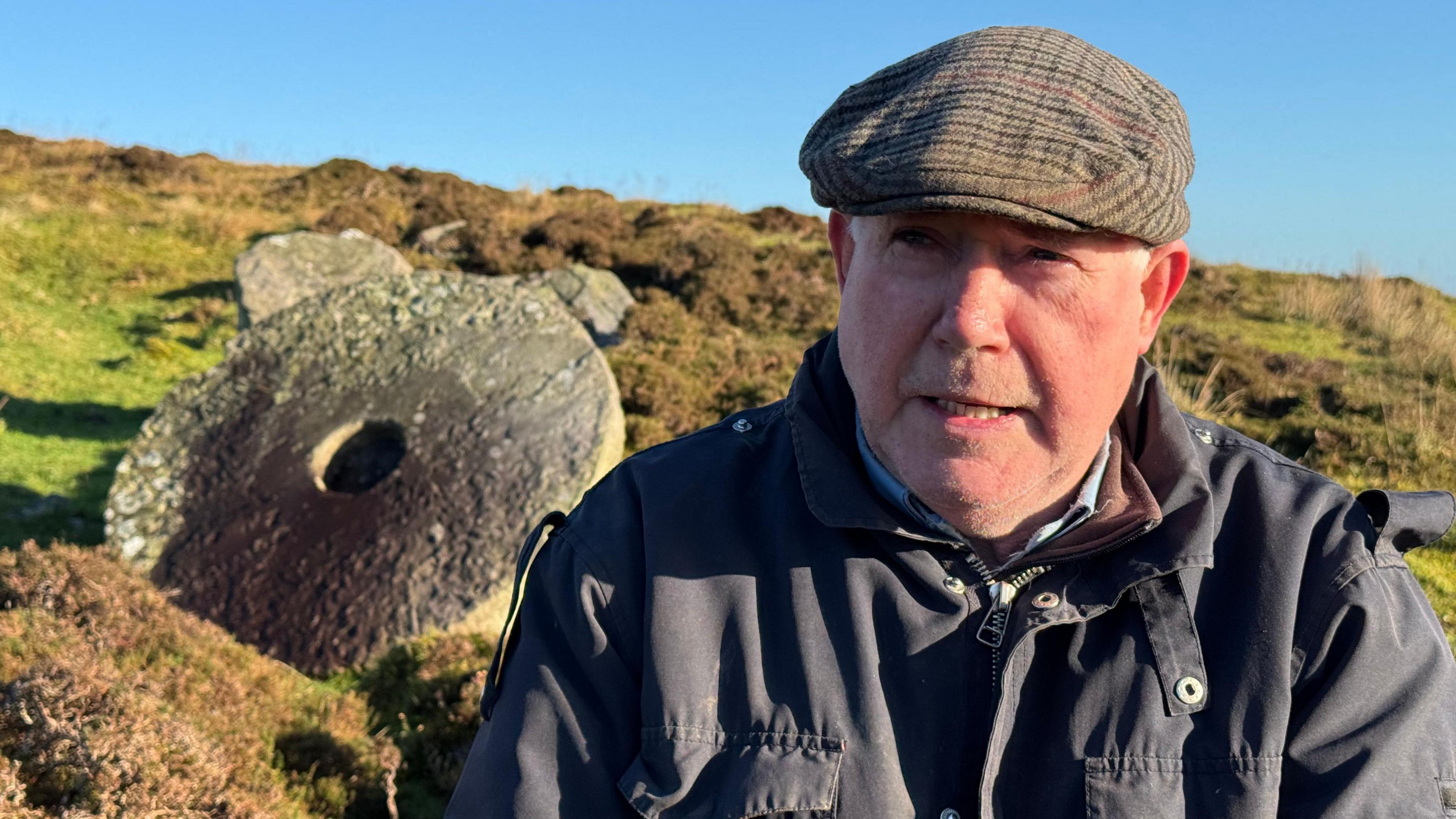
Jude McHugh is aware of the history behind the millstone on his land
Farmer Jude McHugh remembers his father telling him about the millstone that lies on his land.
"There was people cutting it here and getting it ready for the mill in Swad (Swanlinbar) and that they had one side of it done and they were ready to do the other said and a lump broke off it," he explained.
"They had to abandon it and they left it there.
"They were supposed to have gone to America after that and the millstone is there since."
Famine and emigration
Mr Devine believes the industry ended at the time of the Irish famine when many of the farmers emigrated.
"I think what happened here is that in 1845 the trauma of the famine killed the memory of what local people did here on this mountain to make an extra income for themselves up until that point.
"And in the last 160 years or so the memory has been completely forgotten."
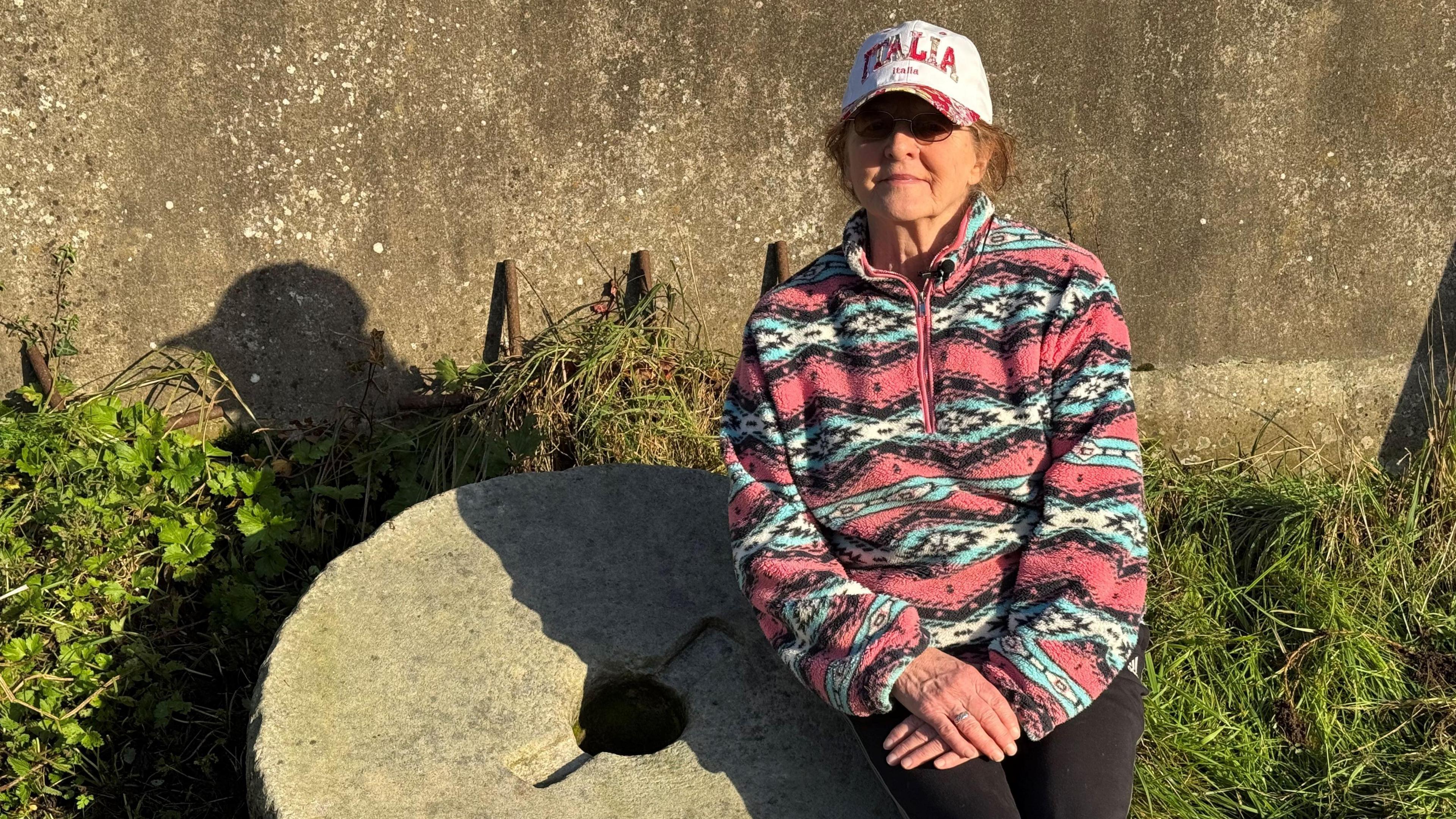
Another millstone lies in the backyard of Marie Howden's farm
Marie Howden has an almost perfect millstone in the back yard of her farm near Bawnboy.
"It was found in the bank of a river 100 years ago by my husband's grandfather and it lay in the river all those years.
"Thirty years ago it was brought down by a digger and left here.
"It's a nice one. I really like it because it's unusual."
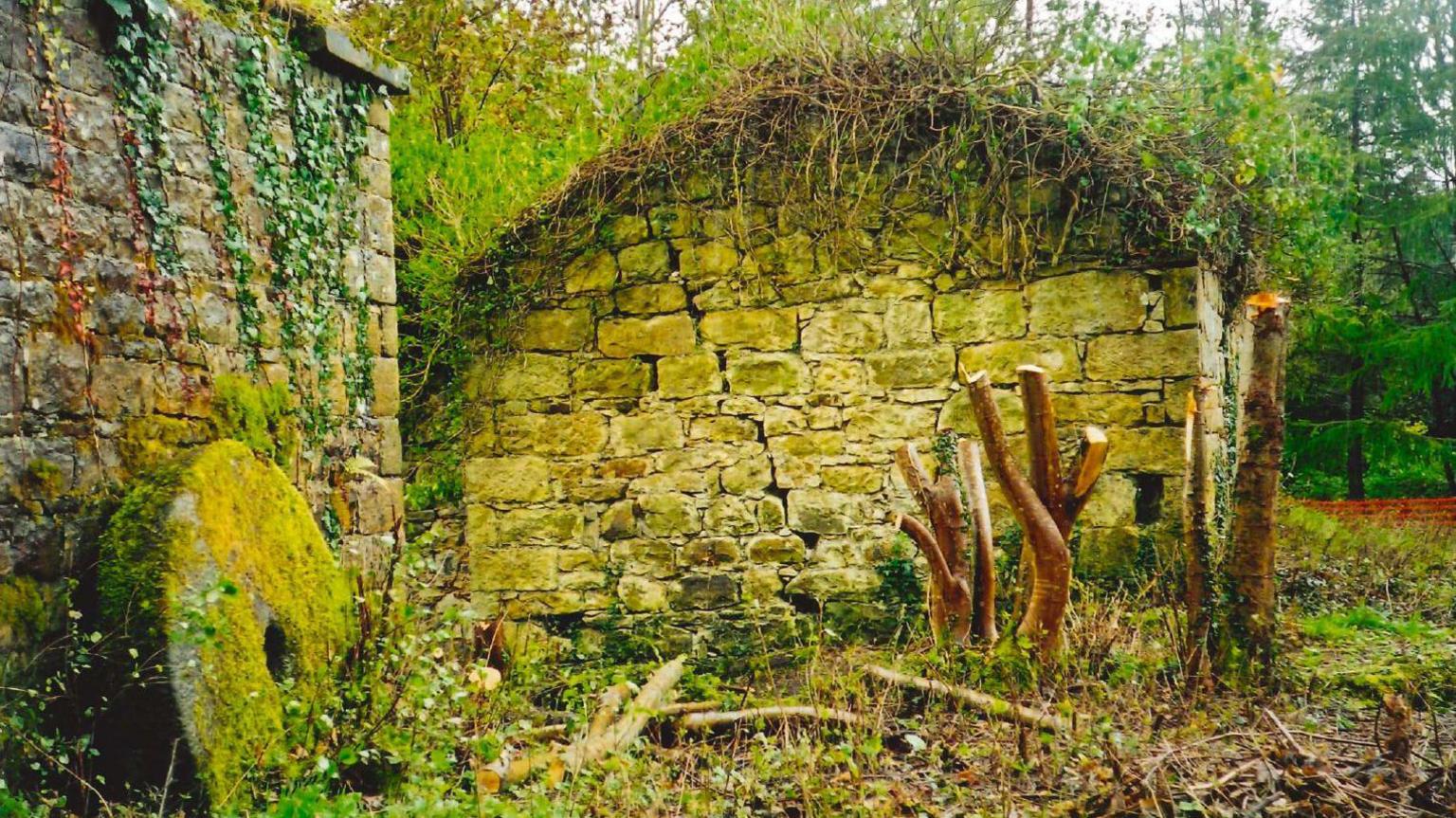
Millstones can sometimes be found hidden in places where nature has taken over
Mr Devine said the local landscape had changed completely over the past two centuries.
"There would've been a lot of people moving about this landscape and the memory of this is important to regain, to reimagine it and preserve it and to remember that this was once a really important place to a lot of people," he said.
"People right around these communities from Bawnboy to Derrylin to Teemore have enjoyed it greatly to find out that their ancestors worked this mountain, and it had been forgotten and it has now been brought back to life again."
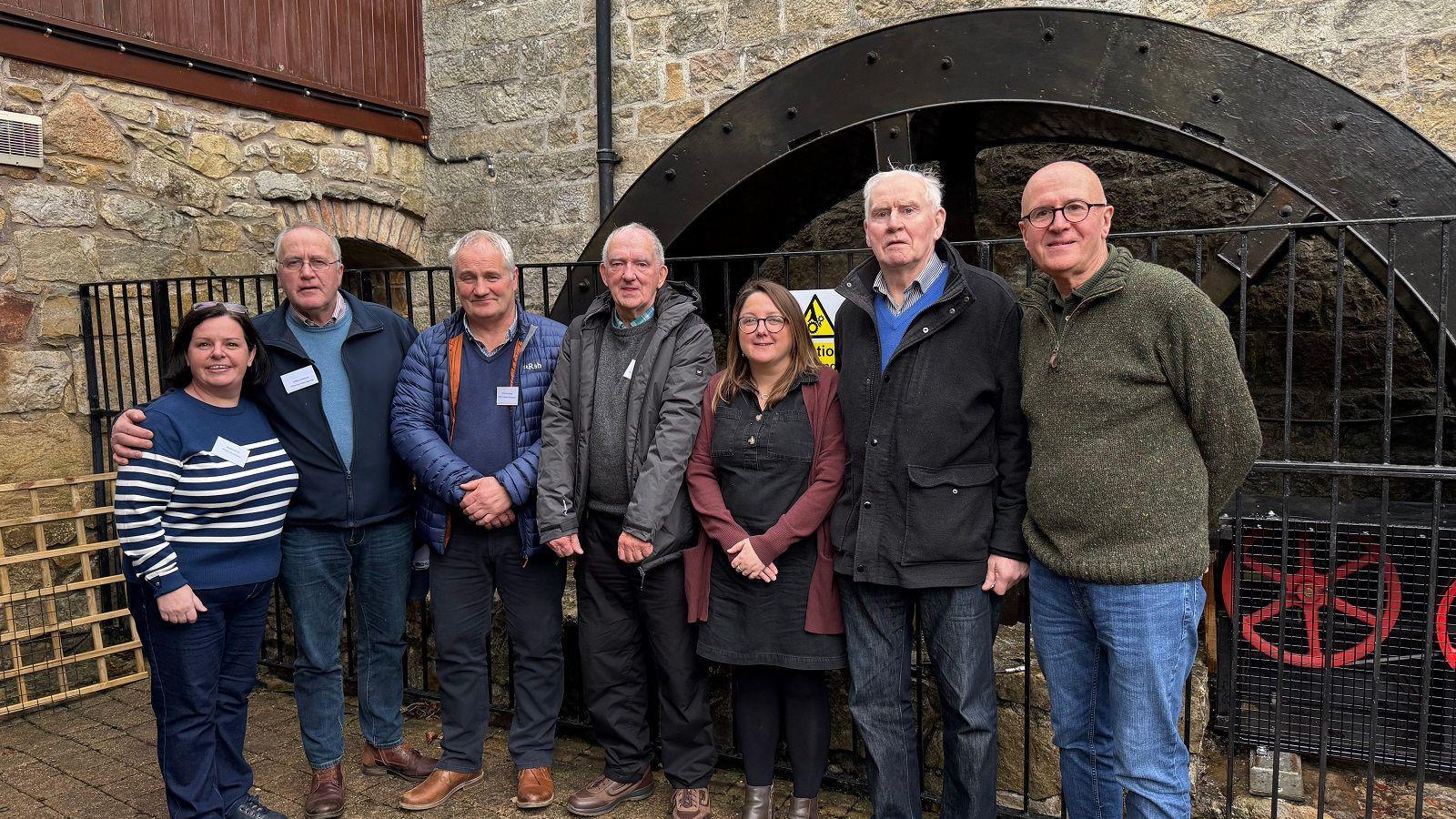
Members of Killesher Community Development Association have been involved in the restoration of Tully Mill
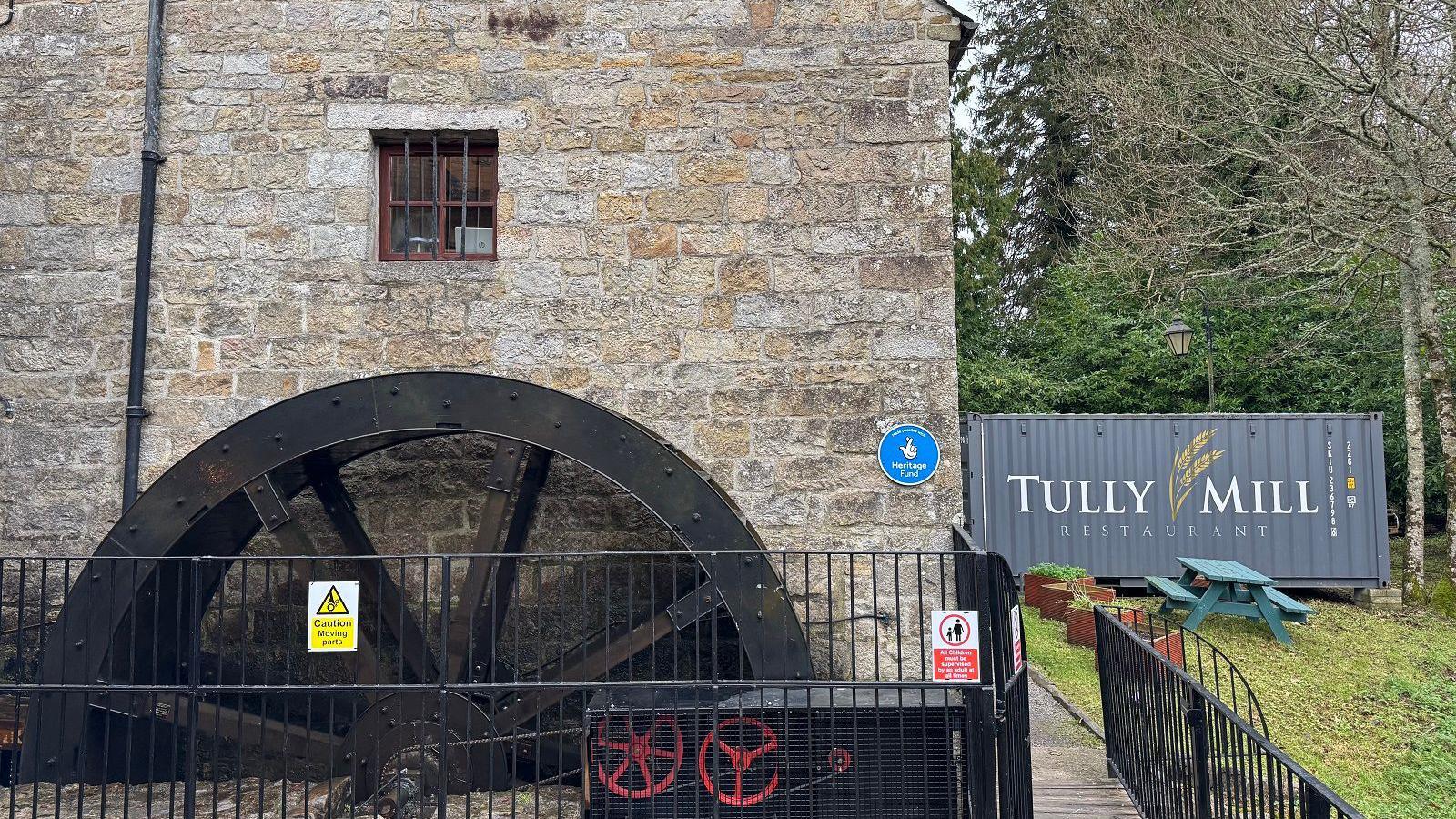
The waterwheel is turning once again at Tully Mill
The history has been recorded at Tully Mill where the waterwheel is turning once again to generate electricity to power lights in the area.
The mill has been converted into a community hub, which includes a hall, a restaurant and holiday cottages.
The restoration was carried out by Killesher Community Development Association with funding from the National Lottery Heritage Fund.
Related topics
- Published26 December 2021
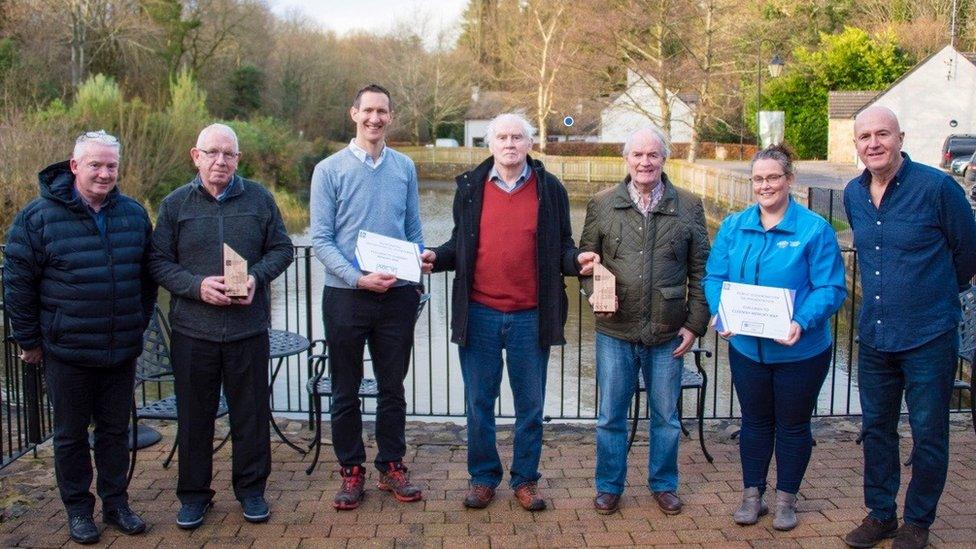
- Published29 October 2014
- Published29 November 2012
- Published20 November 2012